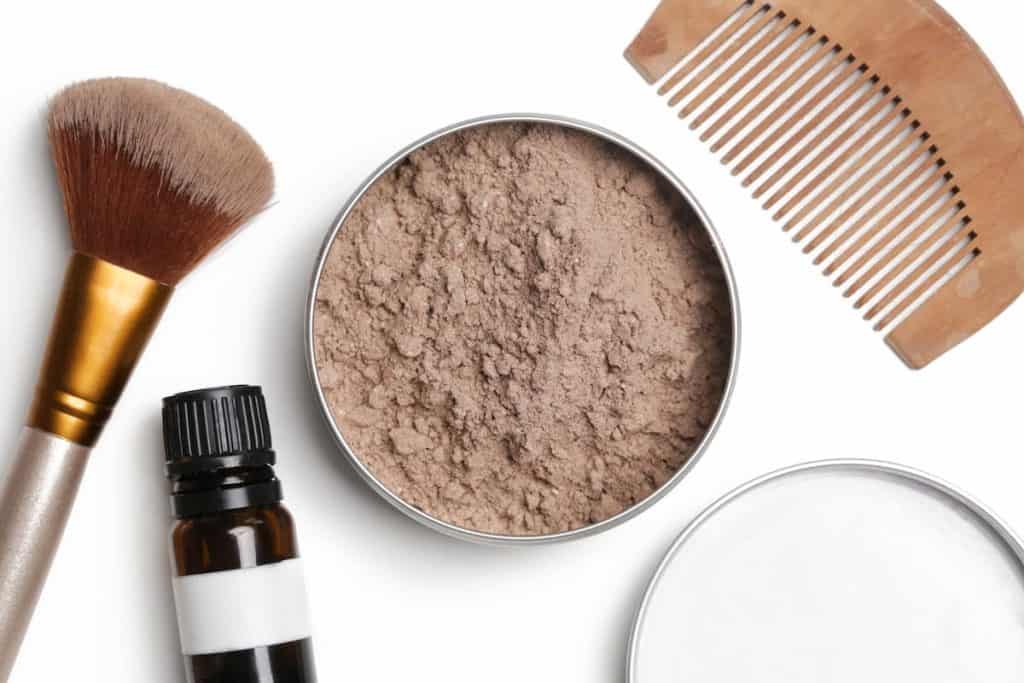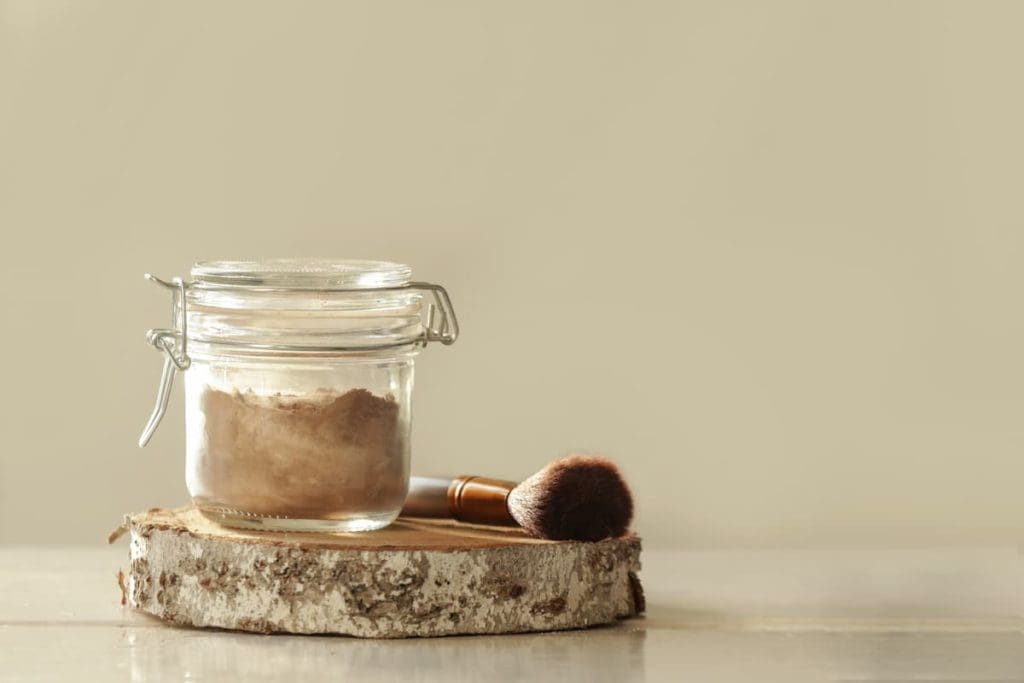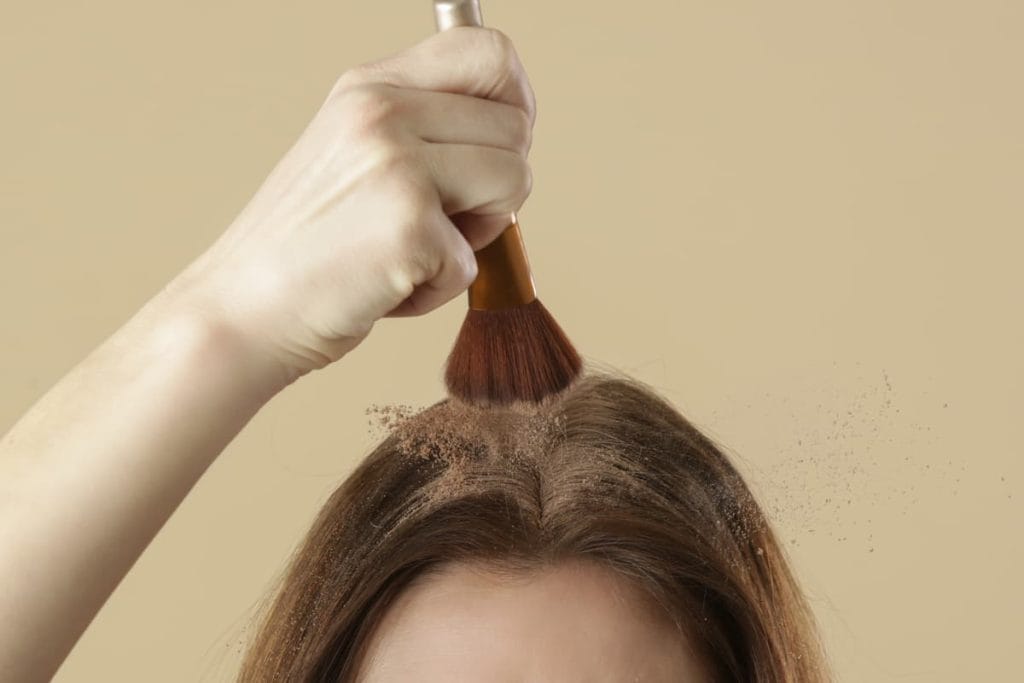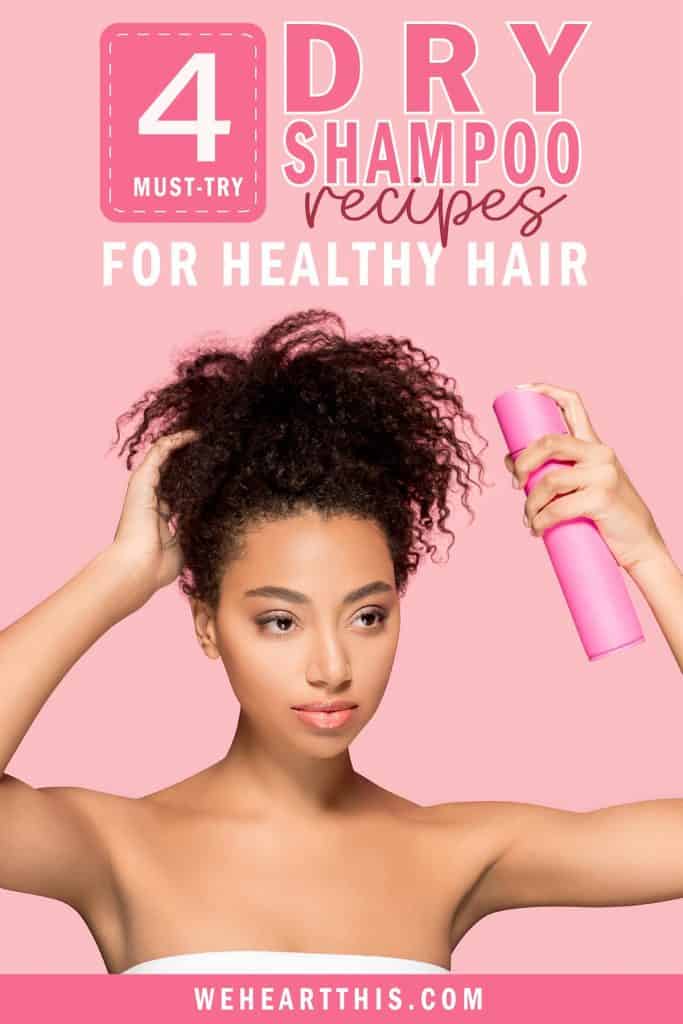DIY Dry Shampoo Recipes + Hacks You Should Try
This post may contain affiliate links, which means I may receive a small commission, at no cost to you, if you make a purchase.
Washing your hair can be a chore — from getting it wet and rinsing the shampoo to drying your hair.
This is especially true if you don’t have much time to do all of that.

Thankfully, dry shampoos are here to the rescue and have been a holy grail product for people who are always on the go.
However, commercial dry shampoos became controversial in the beauty industry since they usually contain chemicals that can be hair damaging, such as isobutane, propane, talc, and benzene.
This is where DIY dry shampoos come in. DIY dry shampoos are easy to make, are super affordable, and don’t need those toxic ingredients to work!
Wondering how to make dry shampoo at home now?
To help you with that, read below and learn some of the best DIY dry shampoo hacks.
Table of Contents
- 1 What Is a Dry Shampoo?
- 2 How Does Dry Shampoo Work?
- 3 DIY Dry Shampoo Solutions
- 4 DIY Dry Shampoo Recipes
- 5 How Often Should I Use Homemade Dry Shampoo?
- 6 Dry Shampoo vs Regular Shampoo
- 7 Is DIY Dry Shampoo Effective?
- 8 Can DIY Dry Shampoos Damage Your Hair?
- 9 Pros and Cons of Using DIY Dry Shampoo
- 10 Conclusion
- 11 Authors
What Is a Dry Shampoo?
Dry shampoo is a hair product that reduces hair greasiness without needing to wash your hair.
It’s a starch-based cosmetic product typically sold as a powder shaker or an aerosol spray.
Most of the formulations of commercial dry shampoos consist of an absorbent (silica, rice starch, aluminum starch), a propellant (alcohol, propane, isobutane, butane), and an aromatic component (essential oil or fragrance).
Thanks to dry shampoo’s rising popularity as an alternative to usual hair washing, consumers are now given numerous aerosol-free options for those who want to avoid using propellants.
Still, many beauty enthusiasts prefer making their own natural dry shampoo recipe to ensure that they only use safe ingredients.
How Does Dry Shampoo Work?

Dry shampoo formulas absorb superficial oily sebum in the hair, giving your hair a less greasy appearance without even washing it.
The active ingredient in alcohol-based and starch-based products binds the grease and oil in the hair to improve cleanliness and reduce shine, leaving your hair matte and smelling fresh.
Unlike the usual shampoo products, you only have to apply or spray it to dry hair without needing additional products or water.
Usually, dry shampoo is applied on top of the head or on visibly greasy areas of your hair.
With this product, you can instantly achieve fresher hair without stepping into the shower.
DIY Dry Shampoo Solutions

Now that you know how dry shampoo works, let’s get into the best homemade dry shampoo recipe hacks you should try to achieve instant fresh and matte hair!
Pro Tip 1: Before applying any of these dry shampoo recipes, do a patch test first. Just apply a small mixture on your inner arm and leave it for 24 hours.
You’re free to use your DIY dry shampoo if your skin looks normal after 24 hours. If you experience any redness or irritation, discard it and never use it.
Pro Tip 2: The following are additional coloring powders you can add to any of these DIY dry shampoo powder recipes to ensure they match your hair color:
- Black hair — mix with activated charcoal
- Dark brown hair — mix with activated charcoal and cocoa powder
- Medium brown hair — mix with cocoa powder
- Auburn hair — mix with activated charcoal, cinnamon, and cocoa powder
- Strawberry blonde hair — mix with cinnamon powder
- Light blonde hair — only use arrowroot powder
- Silver/gray hair — mix with bentonite clay
DIY Dry Shampoo Recipes
Arrowroot Powder / Cornstarch / Rye Flour + Additional Coloring Powder
Ingredients:
- 2 tbsp of arrowroot powder / cornstarch / rye flour
- 2 tbsp of additional coloring powder
The essential ingredients to create a DIY dry shampoo are arrowroot powder, cornstarch, and rye flour.
Choose one of these ingredients. Combine equal amounts of your chosen basic ingredient with your chosen additional coloring powder.
This way, you can create a DIY dry shampoo that perfectly matches your natural hair color.
If you want an added scent to your hair, try adding a few drops of essential oil.
Almonds + Cornmeal + Additional Coloring Powder
Ingredients:
- 1 tbsp finely ground almonds
- 1 tbsp orris root
- 1 tbsp cornmeal
Mix the finely ground almonds, orris root, and cornmeal well.
Before you apply the mixture, brush out your hair well so that the dry shampoo mixture won’t form clumps on your hair.
Apply this dry shampoo mixture on your hair and dust or brush off any excess.
Baking Soda + Oatmeal + Additional Coloring Powder
Ingredients:
- 2 tbsp of baking soda
- 2 tbsp of oatmeal
Mix equal parts of baking soda and finely blended oatmeal.
Then massage it into your greasy roots and brush off any product residue from your roots to your tips.
Cornmeal + Salt + Additional Coloring Powder
Ingredients:
- 1 tbsp of salt
- 8 tbsp of cornmeal
Blend the cornmeal until you reach a powder-like, fine consistency.
Then add 1 tbsp. of salt and mix them well.
You can also try adding lavender petals or dried rose for an additional aromatic touch.

Bentonite Clay + Additional Coloring Powder
Ingredients:
- Bentonite clay
Get your bentonite clay, like the Aztec Secret Indian Healing Clay, and sprinkle a bit of it on your hair.
Make sure to brush it thoroughly afterward.
As an alternative, you can also add clay to your roots directly, bit by bit, and brush through to make sure all its powders have been absorbed.
How Often Should I Use Homemade Dry Shampoo?
You should only use your homemade dry shampoo once your hair gets greasy.
For instance, if your hair starts becoming greasy two or three days after your last wash, you need to apply it on your scalp.
Remember, dry shampoo powders absorb oil. So if you apply it when your hair isn’t oily, you could be stripping off that natural oil that your hair needs to keep healthy and moisturized.
As you apply your DIY dry shampoo, keep in mind that a little goes a long way. Never overdo the application, regardless if you use it every day or once a week.
After using dry shampoo on your locks, you can strike a balance by applying a more hydrating hair product like leave-in conditioners, such as Tea Tree Hair and Body Moisturizer Leave-In Conditioner.
If you don’t want to risk over-usage, it’s best to manage your dry shampoo usage well.
Dry Shampoo vs Regular Shampoo
Although dry shampoos share some of the benefits offered by regular shampoos, their name can be a bit misleading.
Dry shampoo is not actually a shampoo.
Sure, dry shampoo also helps eliminate grease and oil from your hair like regular shampoo. However, dry shampoo does not clean your scalp or hair the way a standard shampoo does.
If you need a temporary solution, dry shampoo works well. But, since it’s only good for temporary use, you will still need regular shampoo.
When overused, dry shampoo can lead to hair breakage, clogged hair follicles, and even dandruff.
Is DIY Dry Shampoo Effective?
DIY dry shampoo is a great alternative to commercial dry shampoos in retail stores.
Like commercial dry shampoos, DIY dry shampoos can execute their main purpose just fine. Both can quickly freshen up hair by removing unwanted oils and sebum that settle on your hair daily.
The only difference is that DIY dry shampoos are made of natural ingredients, which is ideal for those who don’t want to risk any side effects of using the retailed products.
DIY dry shampoos have good alternatives for the ingredients found in mainstream dry shampoos and can still help extend the time between washes and soak up oil.
If used correctly, DIY dry shampoo can boost your hair’s health and appearance and help you save money and time.
Can DIY Dry Shampoos Damage Your Hair?
Generally, homemade dry shampoos are safe to use. However, if you use it too much or use it to replace regular shampooing, then DIY dry shampoos can be hair-damaging.
Even though it grips excess oil and grease, such solutions can strip off too much of the healthy and good oil that your hair needs.
On top of that, excessive use of homemade dry shampoos can clog your hair follicles since they sit on top of your scalp.
Studies show that clogged scalp and hair follicles can result in thinner hair, folliculitis, reduced hair growth and retention, and an overall decline in volume and shine.
Fortunately, you can remove any buildup of powders and products and rebalance the pH of your scalp with a good scalp scrub.

Pros and Cons of Using DIY Dry Shampoo
Pros
- Adds texture
- Adds volume
- Eliminates greasiness
- Eliminates odor
- Extends time between washes
- Improves hair appearance
- Prolongs hair color
- Saves time
- Soothes irritated scalp
- Refreshes curls or style
Cons
- Can be irritating to some
- Doesn’t totally clean your hair
- Can cause dandruff when overused
- Can lead to folliculitis, lesser hair growth, and shine when overused
Conclusion
When used in moderation, dry shampoos can be a great addition to your hair care routine. It provides an easy solution to cover up dirt and grease without getting into the shower.
If you want to try a dry shampoo, you can skip buying one and try making your own dry shampoo instead, using our tips above.
However, remember that you still must wash your hair regularly with wet shampoos.
So don’t rely on dry shampoos too much, and only use them when needed.
Consider it as a temporary help, not a permanent solution.
Let us know which mixture would you like to try!

Do you want to discover more hair care tips?
Read these articles below:


